Along with our Professional Horticulture Program classmates, we recently completed one of the most exciting parts of our two-year program—our opportunity to experience horticulture in another country through our study abroad trip. Inspired by Longwood Reimagined: A New Garden Experience and its forthcoming West Conservatory’s Mediterranean-inspired palette, we led the planning and preparation for the program’s class of 2023 week-long trip to Italy, which took place in late May. After our return, and as a follow-up to our pre-trip blog post, we would like to share some of the wonderful gardens and horticultural institutions we visited, as well as our interactions with some unique facets of Italian horticulture … and how this trip enabled us to obtain meaningful knowledge to bring back to the Longwood team.

Villa Taranto: We arrived at this first garden slightly jetlagged, but full of excitement. We met with the garden curator who took us on a personalized tour. Our classmates were enthralled by the unique plant specimens, from variegated stewartia to unique maple leaf forms to floriferous mountain-laurels. Encouraged by our enthusiasm, our tour guide led us all around the garden, pointing out the most interesting plant specimens. One of the most memorable areas of this garden was a valley planted with several tree ferns in a magical array. Inside a glass house we saw a familiar sight: Santa Cruz water-platters (Victoria cruziana). Part way through our garden tour, it started raining. We booked it for a nearby cafe in the garden that was conveniently selling cannoli and espresso. While we waited for the rain to stop, we had a lovely view of raindrops in ponds filled with waterlilies and ducks. Villa Taranto certainly set the standards high for the rest of the trip.
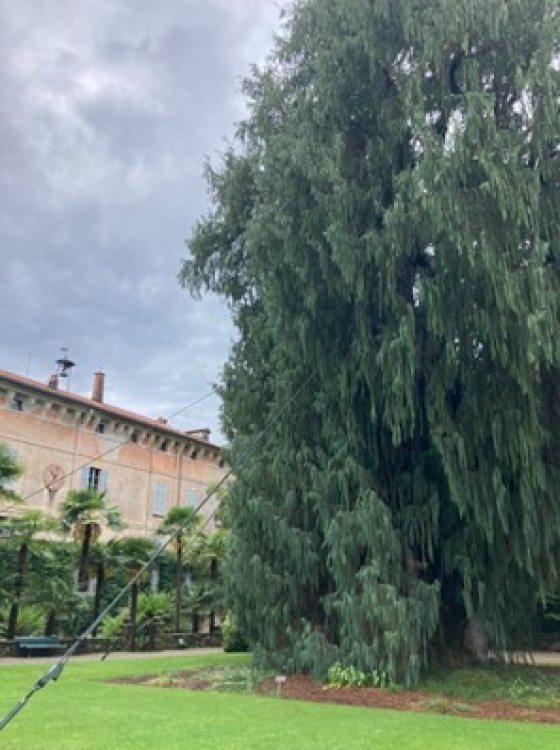
Isola Madre: Our second stop did not disappoint. Traveling to Isola Madre required a scenic boat ride across Lake Maggiore. From the moment of stepping into this island garden, we were struck by the plant diversity. There was a combination of native plants and acclimated exotic species. The microclimate of this island also allowed the trees and shrubs to grow at a faster rate than we are used to. We saw many familiar species such as rhododendrons and mountain-laurels, but were amazed at the size of these shrubs. Of note was the historic specimen tree, Kashmir cypress, located next to the villa. We learned how this enormous tree fell over in a storm and was saved by restoring the tree to its upright position, cabling it, and carefully tending it over years. This stunning specimen was certainly worth the effort and we were delighted to have the opportunity to see it–and it made us picture just how stunning cypress trees will look in the West Conservatory upon its opening.

Private Garden: Our next stop was one of the most unique of the trip. We drove the van through small, winding streets until we arrived at the gated driveway of a private garden. The owner, Susanna, greeted us warmly. Offering us espresso, Italian sodas, and platters of sweet treats, she explained the history of the property. Her family lived there for generations and had a peony and hellebore farm for many years. She walked us around the property. Her passion for horticulture was evident. At the top of the hill was the historic house with espalier trees growing on the side. Peonies were nestled on a terraced hill and a wooded area was located at the bottom of the hill. She had a plastic swimming pool with willow branches soaking. When we asked about it, she explained this is how she prepared them for weaving and then showed us one of her willow weavings for the garden. Susanna’s family story, passion for horticulture, and kindness made this stop a memorable one.
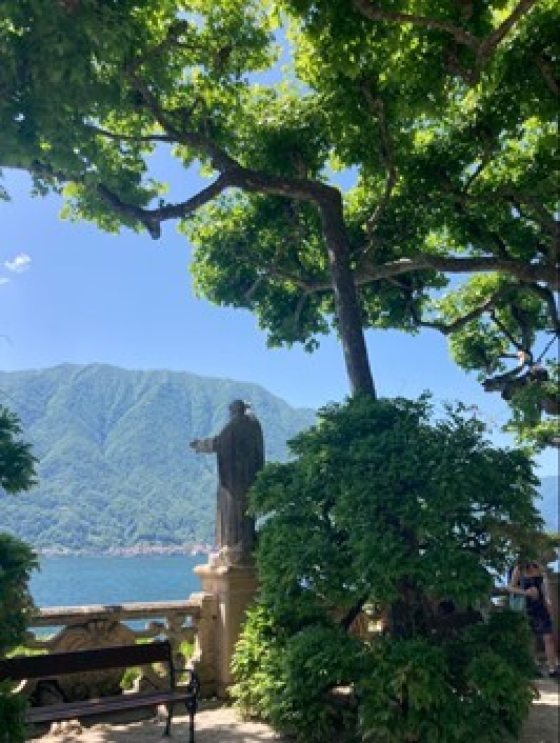
Villa Balbianello: At our next stop, we met with a tour guide who showed us around the house and elaborate terraced garden. The views of Lake Como from the hill were striking. The pruning and shearing techniques utilized here were definitely a highlight. Pollarded plan-trees lined the edge of the terrace. Willow oaks located next to the house were carefully pruned into a dome shape. We learned that horticulturists climb the willow oaks to hand-prune them into this unique shape. We learned from our guide that the house and garden were built on top of rock. There is only a small layer of topsoil. This poses unique challenges to horticulturists. It doesn’t show, however. This garden was stunning.
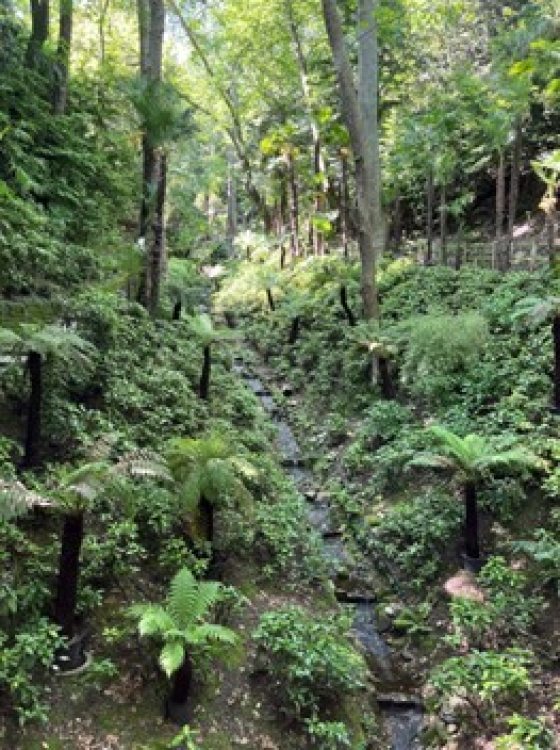
Villa Carlotta: After our time at Villa Balbianello, we continued to our next garden, Villa Carlotta. Situated on a somewhat steep hillside, this garden is known for its formal design and magnificent views of the lake. We met with Gianluca Selva, the head gardener, and briefly talked with him about his history with gardening before heading off on our tour. One of the first notable areas was the tree fern valley, where 30 large tree ferns are brought out each spring and returned to greenhouses for the harder winter temperatures. At the very top of the hill we walked through a grove of very established olives with an unbelievable view of the lake and surrounding mountain ranges. The olive grove brought our minds to the seven olive trees that will grace the central island in Longwood’s new West Conservatory; these 100-year-old trees are currently growing near Napa Valley, California; they’ll be potted and put in boxes for a truck ride across the country, arriving here at Longwood in May 2024.

Orto Botanico di Padova: After a long drive, we reached Padua, a region that houses the oldest botanic garden in the world, Orto Botanico di Padova. We spoke with a tour guide as well as the head horticulturist there, and they gave some very interesting information on the history and botanical nature of the space. We started in the historical section and enjoyed exploring medicinal, aquatics, and other unique plant groups. Next, we explored a newer section that included a large greenhouse facility divided up into numerous biomes: rainforest, temperate, arid, and so on. At this point in the trip we were noticing a trend among the gardens in the use of more biological pest controls versus chemicals. Because of the strict restrictions on pesticides, we spoke with them about how pesticides and herbicides aren’t used in all of the public garden spaces we visited.
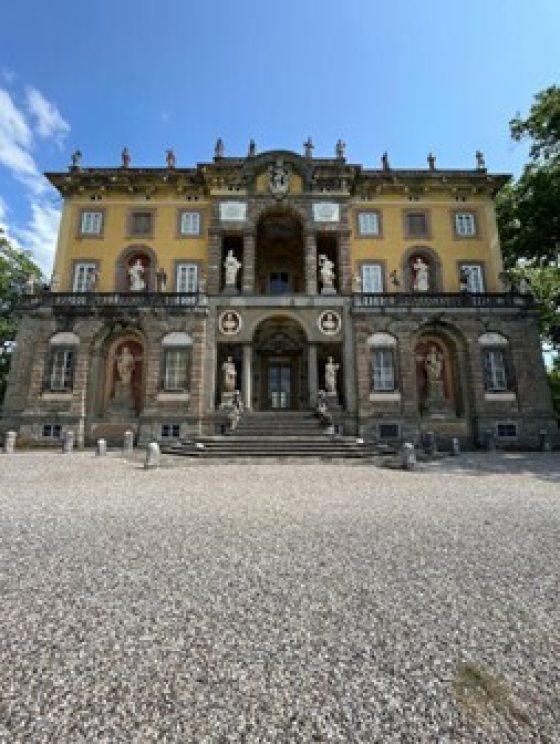
Villa Torrigiani: At Villa Torrigiani we began our tour in the villa which was furnished in a very historically accurate fashion. We spoke with the owner and she gave us interesting snippets of information from the extensive past of the property. We then went outside to see the horticultural displays and she gave us a brief overview of how the garden rooms have changed in the recent past. She gave us insight into how COVID-19 affected their work force and in turn how they had to redesign and simplify some of the more intensive horticultural areas of their gardens. Although not positive, hearing how the pandemic affected Italian life and the horticulture industry there was very interesting.
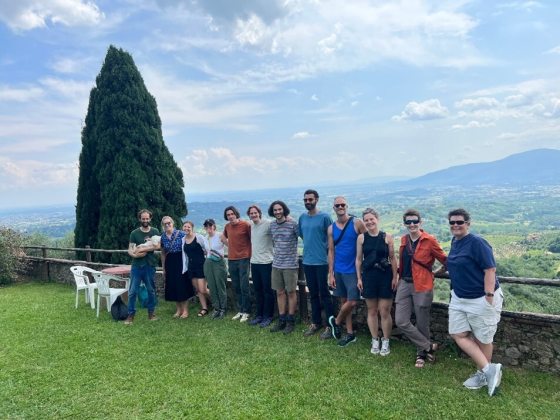
After an incredible taste of Italian cuisine, the students have nothing but happy smiles as they take in the breathtaking view of the Tuscan mountainous landscape. Photo by Alessandro Tombelli.
The Ristoro della Fattoria di Petrognano: Although this was not a garden, it was an experience that we felt deserved a brief overview. For lunch in Tuscany we visited Ristoro della Fattoria di Petrognano, or the “restaurant on Petrognano farm” in English. This family-owned “agritourism” business is situated on the hillside in Tuscany overlooking some of the most sweeping views of our trip. We were treated to a lunch menu created by the chefs that included the use of their locally grown, harvested, and processed olive oils, wines, and vin santo. The meal was unbelievably delicious, and afterwards we were able to explore the growing areas and processing facilities there. We enjoyed hearing about the history of their family business and how they fit into the Italian hospitality industry.

Nursery Vannucci Piante: To get a taste for the plant production side of things we visited the largest nursery in Italy, Vannucci Piante in Pistoia. This family-founded company was a truly impressive example of the futuristic path plant production is taking in Europe. This included a fully mechanized system of packing, loading, and shipping plants, forklifts speeding around picking up plants and trucks coming out of the ground to be loaded and sent on their way This created a more efficient and more ergonomic way of processing plant sales and, as our tour guide mentioned, the constant search to modernize and improve is what allowed this nursery to become the success it is today.
The process reminded us of how, for Longwood Reimagined, Longwood has been scouting and tagging plants at the nation’s leading nurseries to be transported to the new space. Once complete, the West Conservatory will feature 70 species of plants, sourced from these premier North American nurseries.
The length and breadth of sales for Vannucci Piante surprised us as well, delivering plants more locally to parts of Northern Italy to as far as the vastly different climate of the Middle East. One plant that especially caught our eye was the huge olive trees being shipped out, another taste of what is to come in the Mediterranean plant palette of the new West Conservatory.
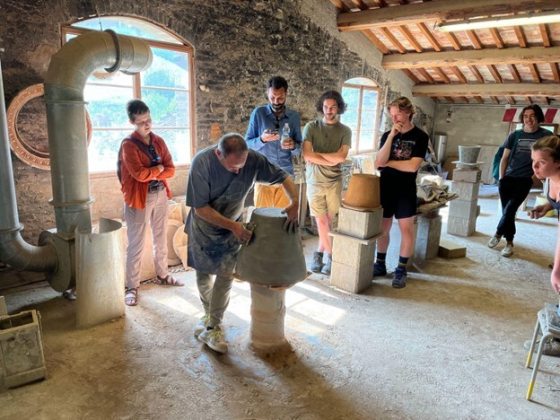
Terracotta in Impruneta: A surprise addition to our trip was a tour of Masini Terrecotte, a family-run terracotta manufacturing company. It was located in the town of Impruneta, a place famous for clay in the soil that is ideal for sculpting these amazing works of art. One of the family members took us around the shop, walking us through the process of molding and sculpting the pots. A highlight was watching the owner and master sculptor hand-make a large pot on the spot, snaking a long strip of clay around a pot mold, smoothing the lines and sides to perfection, and only leaving a ring of footprints around the work table to witness the many many pots he made. Each pot was stamped with the company's logo and an official “made in Impruneta” stamp to show it is real Italian terracotta. We all left with gorgeous terracotta souvenirs and a better appreciation for the craft and containers we use in our gardens.
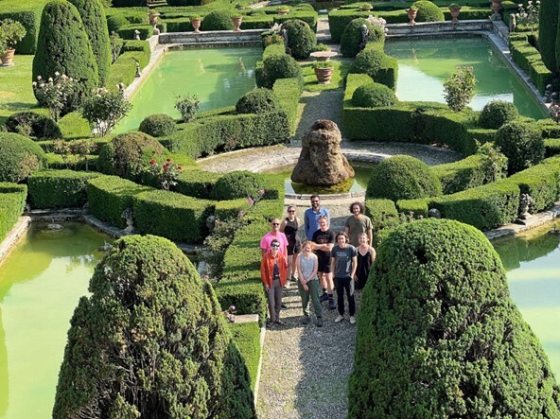
Villa I Tatti: Villa I Tatti was special to our trip because it was a garden our Italian horticulture and travel expert Alessandro Tombelli used to work in; we met with his former co-worker and good friend. She gave us an excellent tour of the grounds and was able to speak directly to current projects and address daily struggles the gardens present. Being able to connect directly with horticulturists in Italy gave us a clearer idea of what gardening there is really like, expanding our gardening worldview. Some of the great features of this garden were the exceptional topiary hedging and creation of garden rooms. As a distinguished place of Italian Renaissance studies, owned by Harvard University, Villa I Tatti immersed us in the true experience of what embodies and shapes these gardens.
Villa Gamberaia: Our final garden led us in the footsteps of Pierre S. and Alice du Pont to Villa Gamberaia—they visited this garden in 1913, which inspired them to create the Italian Water Garden here at Longwood. This was an incredible experience to see firsthand some of the Italian inspiration for the garden we have studied, worked, and lived in for the past two years. Tombelli led the tour here, combining his knowledge of Italian horticulture and love of Longwood to paint a picture of this estate. We learned that this estate has been on the market for several years now, a trend that seems to be prevailing at many of these old gardens, and its fate still remains unknown. If you are looking for a new home in Italy, consider keeping a part of Longwood history alive at Villa Gamberaia!
From olive trees and agave, to citrus and cypress (just to name a few!), the Mediterranean plant palette we interacted with throughout the trip increased our excitement for the opening of the West Conservatory as part of Longwood Reimagined. Ultimately, upon its opening, the West Conservatory will boast an extensive plant palette of iconic plants from six representative geographic areas, including the Mediterranean Basin, the Cape Region of South Africa, coastal California, central Chile, southwestern Australia and south Australia. Agaves, aloes, blueblossom and breath-of-heaven will hug the ground of the West Conservatory while taller plants like cypress, laural, acacia, and the 100-year-old olive trees will rise dramatically in the new space—and we can’t wait to see the finished result. As we look forward to continuing to explore horticulture in other places following our graduation from the Professional Horticulture Program, we also look forward to returning to Longwood in the years to come and be reminded of our time in Italy while walking through the West Conservatory.


